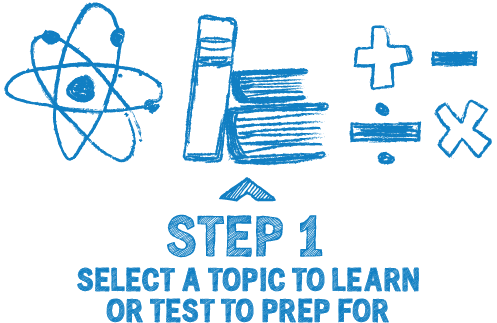Unknown Angle Algebra Problems
Grade 7 Math Worksheets
Angles are fundamental elements of geometry, and understanding their properties is essential for solving geometric puzzles. In this article, we will embark on a journey of discovery as we delve into the world of unknown-angle algebra problems specifically designed for Grade 7 students.
By combining the power of algebraic expressions and geometric principles, we will unravel the mysteries of angles with a touch of mathematical elegance
Table of Contents:
- Unknown Angle Algebra Problems
- Properties
- Solved Examples
- Real-life Applications
- FAQs
Personalized Online Tutoring
Unknown Angle Algebra Problems - Grade 7 Math Worksheet PDF
This is a free worksheet with practice problems and answers. You can also work on it online.
Sign up with your email ID to access this free worksheet.
"We really love eTutorWorld!"
"We really love etutorworld!. Anand S and Pooja are excellent math teachers and are quick to respond with requests to tutor on any math topic!" - Kieran Y (via TrustSpot.io)
"My daughter gets distracted easily"
"My daughter gets distracted very easily and Ms. Medini and other teachers were patient with her and redirected her back to the courses.
With the help of Etutorworld, my daughter has been now selected in the Gifted and Talented Program for the school district"
- Nivea Sharma (via TrustSpot.io)
Unknown Angle Algebra Problems
Setting up Equations: Unknown angle algebra problems often require setting up equations based on known angle measures or angle relationships within a geometric figure. By assigning variables to the unknown angles and using algebraic expressions to represent the given information, students can create equations that allow them to solve for the unknown angle.
Applying Angle Properties: Utilizing the properties of angles is crucial in solving unknown angle algebra problems. Students must have a firm grasp of angle relationships such as supplementary angles, complementary angles, and vertical angles. By identifying these relationships within the given figure, students can derive equations that help solve for the unknown angle.

Simplifying and Solving Equations: Once the equation is set up, students can use their algebraic skills to simplify and solve for the unknown angle. This may involve combining like terms, distributing, or applying inverse operations to isolate the variable representing the unknown angle.
Checking and Verifying Solutions: It’s essential for students to check their solutions by substituting the value of the unknown angle back into the original equation or applying the angle properties within the geometric figure. Verifying the solution ensures its accuracy and reinforces the understanding of angle relationships.
Properties
Supplementary Angles:
Supplementary angles are pairs of angles that add up to 180 degrees. When two angles are supplementary, their sum is equal to a straight angle. This property is useful when working with unknown angles that are part of a supplementary pair. Setting up equations based on the sum of angles can help determine the measure of the unknown angle.
Complementary Angles:
Complementary angles are pairs of angles that add up to 90 degrees. When two angles are complementary, their sum is equal to a right angle. This property can be employed to solve problems involving unknown angles that are complementary. By setting up equations based on the sum of angles, students can determine the measure of the unknown angle.
Vertical Angles:
Vertical angles are formed by the intersection of two lines. They are congruent, meaning they have equal measures. This property is particularly useful when dealing with unknown angles that form vertical angles with known angles. By identifying vertical angles, students can set up equations and use algebraic techniques to find the measure of the unknown angle.
Angle Relationships in Triangles and Quadrilaterals:
Understanding the angle relationships within triangles and quadrilaterals is crucial in solving unknown angle algebra problems. Properties such as the sum of angles in a triangle (180 degrees) and the sum of angles in a quadrilateral (360 degrees) can be employed to set up equations and solve for unknown angles.
Solved Examples
Example 1:
In a triangle, the measure of one angle is three times the measure of another angle. The third angle is 30 degrees less than the measure of the first angle. Find the measures of all three angles.
Solution:
Let’s assume the measure of the first angle is x degrees.
The measure of the second angle is three times the measure of the first angle, so it is 3x degrees.
The measure of the third angle is 30 degrees less than the measure of the first angle, so it is (x – 30) degrees.
According to the angle sum property of a triangle, the sum of the three angles is 180 degrees:
x + 3x + (x – 30) = 180
Simplifying the equation:
5x – 30 = 180
5x = 210
x = 42
So, the measure of the first angle is 42 degrees, the measure of the second angle is 3 * 42 = 126 degrees, and the measure of the third angle is 42 – 30 = 12 degrees.
Example 2:
In a quadrilateral, the measure of one angle is four times the measure of another angle. The third angle is 20 degrees less than the measure of the second angle, and the fourth angle is 40 degrees more than the measure of the third angle. Find the measures of all four angles.
Solution:
Let’s assume the measure of the second angle is x degrees.
The measure of the first angle is four times the measure of the second angle, so it is 4x degrees.
The measure of the third angle is 20 degrees less than the measure of the second angle, so it is (x – 20) degrees.
The measure of the fourth angle is 40 degrees more than the measure of the third angle, so it is (x – 20 + 40) = (x + 20) degrees.
According to the angle sum property of a quadrilateral, the sum of the four angles is 360 degrees:
4x + x + (x – 20) + (x + 20) = 360
Simplifying the equation:
7x = 360
x = 360/7 ≈ 51.43
So, the measure of the second angle is approximately 51.43 degrees, the measure of the first angle is 4 * 51.43 ≈ 205.71 degrees, the measure of the third angle is 51.43 – 20 ≈ 31.43 degrees, and the measure of the fourth angle is 51.43 + 20 ≈ 71.43 degrees.
“There have been times when we booked them last minute, but the teachers have been extremely well-prepared and the help desk at etutorworld is very prompt.
Our kid is doing much better with a higher score.”
7th Grade Tutoring
eTutorWorld offers Personalized Online Tutoring for Math, Science, English, and Standardised Tests.
Our Tutoring Packs start at just under $22.49 per hour, and come with a moneyback guarantee.
Schedule a FREE Trial Session, and experience quality tutoring for yourself. (No credit card required.)
Real-life Applications
Architecture and Engineering:
Architects and engineers often use angles and geometric principles to design structures. They need to determine unknown angles to ensure the stability and integrity of buildings, bridges, and other constructions. Algebraic techniques help in calculating and verifying the angles necessary for accurate and safe designs.
Surveying and Landscaping:
Surveyors and landscapers use angles to measure and layout boundaries, plots, and landscapes. When encountering unknown angles in the field, they rely on their knowledge of geometry and algebraic methods to calculate and establish accurate angles for proper positioning and alignment.
Navigation and GPS Systems:
Navigational systems, such as GPS (Global Positioning System), rely on geometric principles to determine positions and angles. By employing algebraic techniques, unknown angles can be calculated to ensure accurate navigation and precise positioning.
Physics and Engineering Sciences:
Fields such as physics and engineering often involve calculations related to angles in various contexts. Whether it’s determining the trajectory of a projectile or analyzing forces acting on an object, understanding angles and using algebraic methods to solve unknown angles is crucial in these scientific disciplines.
Computer Graphics and Animation:
Computer graphics and animation rely on geometric transformations and calculations involving angles. Unknown angles may arise when creating realistic movements or determining the orientation of objects. Algebraic techniques can be applied to solve for unknown angles and achieve desired visual effects.
Do You Stack Up Against the Best?
If you have 30 minutes, try our free diagnostics test and assess your skills.
FAQs
What are unknown angle algebra problems?
Unknown angle algebra problems involve finding the measure of an unknown angle using algebraic techniques and the properties of angles. These problems typically provide information about angle relationships within geometric figures and require setting up and solving equations to determine the value of the unknown angle. By applying algebraic concepts alongside angle properties, students can solve for the measure of the unknown angle.
Why are unknown angle algebra problems important?
Unknown angle algebra problems help develop critical thinking, problem-solving, and algebraic skills while reinforcing the understanding of angle properties and relationships. These problems bridge the gap between algebra and geometry, allowing students to apply algebraic techniques to solve geometric puzzles. Mastering the ability to work with unknown angles prepares students for more advanced mathematical concepts and real-life applications involving angles.
How can I approach solving unknown angle algebra problems?
To solve unknown angle algebra problems, start by identifying the given angle measures and angle relationships within the geometric figure. Assign variables to the unknown angles and use algebraic expressions to represent the given information. Set up equations based on angle properties and solve them algebraically to find the value of the unknown angle. Verify the solution by substituting the value back into the original equation or applying the angle properties within the figure.
What strategies can I use to solve unknown angle algebra problems?
Some key strategies for solving unknown angle algebra problems include:
Identifying and applying angle properties such as supplementary angles, complementary angles, and vertical angles.
Setting up equations based on angle relationships and known angle measures.
Using algebraic techniques to simplify expressions and solve equations.
Verifying solutions by substituting the value of the unknown angle back into the original equation or checking angle relationships within the geometric figure.
How can I improve my skills in solving unknown angle algebra problems?
Practicing a variety of unknown angle algebra problems is crucial for improving skills in this area. Start with simpler problems and gradually progress to more complex ones. Focus on understanding the underlying angle properties and concepts involved. Analyze and learn from solved examples to gain insights into problem-solving strategies. Engage in hands-on activities, use interactive resources, and seek additional practice opportunities to reinforce understanding and enhance proficiency.

Gloria Mathew writes on math topics for K-12. A trained writer and communicator, she makes math accessible and understandable to students at all levels. Her ability to explain complex math concepts with easy to understand examples helps students master math. LinkedIn
Affordable Tutoring Now Starts at Just $22.49
eTutorWorld offers affordable one-on-one live tutoring over the web for Grades K-12. We are also a leading provider of Test Prep help for Standardized Tests (SCAT, CogAT, MAP, SSAT, SAT, ACT, ISEE, and AP).
What makes eTutorWorld stand apart are: flexibility in lesson scheduling, quality of hand-picked tutors, assignment of tutors based on academic counseling and diagnostic tests of each student, and our 100% money-back guarantee.
Whether you have never tried personalized online tutoring before or are looking for better tutors and flexibility at an affordable price point, schedule a FREE TRIAL Session with us today.
*There is no purchase obligation or credit card requirement
Grade 7 Science Worksheets
- Elements and Compounds
- Solar Energy
- Photosynthesis
- Electricity and Magnetism
- Law of conservation of energy
- Periodic table
- Properties of Matter
- Waves
- Energy Resources
- Weather and Climate
- Immune, Circulatory and Digestive Systems
- Organs in Multi-cellular Organism
- Sedimentary, Igneous, and Metamorphic Rocks
- Structure of the Earth
- Law of Conservation of Mass
- Physical and Chemical Changes
- Scientific Method
- Human Digestive System
- Environmental Science
- Renewable and Non-renewable energy Resources
- Characteristics of Living Organisms
- Life Science
- Earth and Space Science
- Solar Eclipse
- Heat Technology
- Newton’s Laws of Motions
- Physical Science
- Tools, Measurement and SI Units
- Earth Atmosphere
- Interactions of Living things
- The Earth Ecosystem
- Organelles in Plant and Animal cells
- Layers of the Earth
- Cycles in Nature
Grade 7 Math Worksheets
- Fractions
- Linear equations word problems
- Statistics
- Properties of Parallel Line
- Finding slope from an equation
- Identifying Quadrilaterals
- Percent Change
- Properties of addition and multiplication
- Pythagorean Theorem
- Solving two step inequalities
- Symmetry
- Fractions to Decimals (New)
- Whole Number Exponents with Integer Bases (New)
- Adding and Subtracting Fractions (New)
- Integer Addition and Subtraction (New)
- Dividing Mixed Numbers (New)
- Basics of Coordinate Geometry (New)
IN THE NEWS

Our mission is to provide high quality online tutoring services, using state of the art Internet technology, to school students worldwide.
Online test prep and practice
SCAT
SSAT
ISEE
PSAT
SAT
ACT
AP Exam
Science Tutoring
Physics Tutoring
Chemistry Tutoring
Biology Tutoring
Math Tutoring
Pre-Algebra Tutoring
Algebra Tutoring
Pre Calculus Tutoring
Calculus Tutoring
Geometry Tutoring
Trigonometry Tutoring
Statistics Tutoring
Quick links
Free Worksheets
Fact sheet
Sales Partner Opportunities
Parents
Passive Fundraising
Virtual Fundraising
Our Expert Tutors
Safe and Secure Tutoring
Interactive Online Tutoring
After School Tutoring
Elementary School Tutoring
Middle School Tutoring
High School Tutoring
Home Work Help
Math Tutors New York City
Press
©2022 eTutorWorld Terms of use Privacy Policy Site by Little Red Bird
©2022 eTutorWorld
Terms of use
Privacy Policy
Site by Little Red Bird









